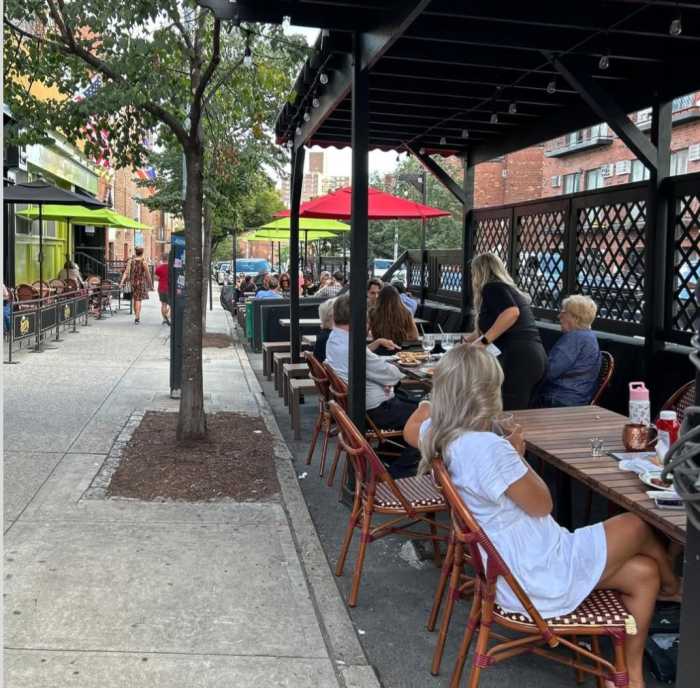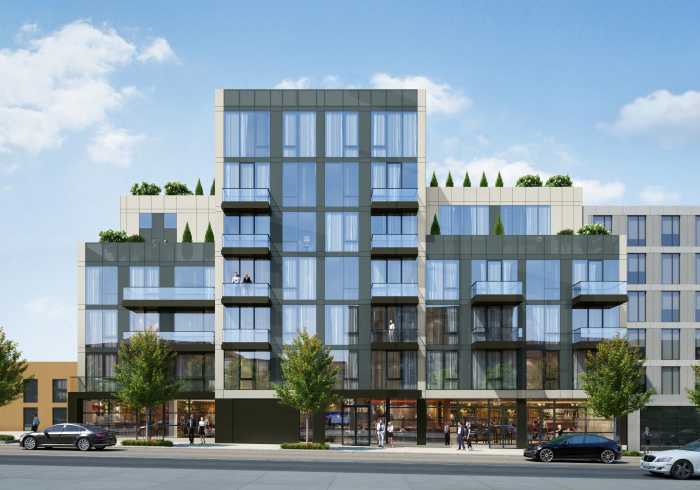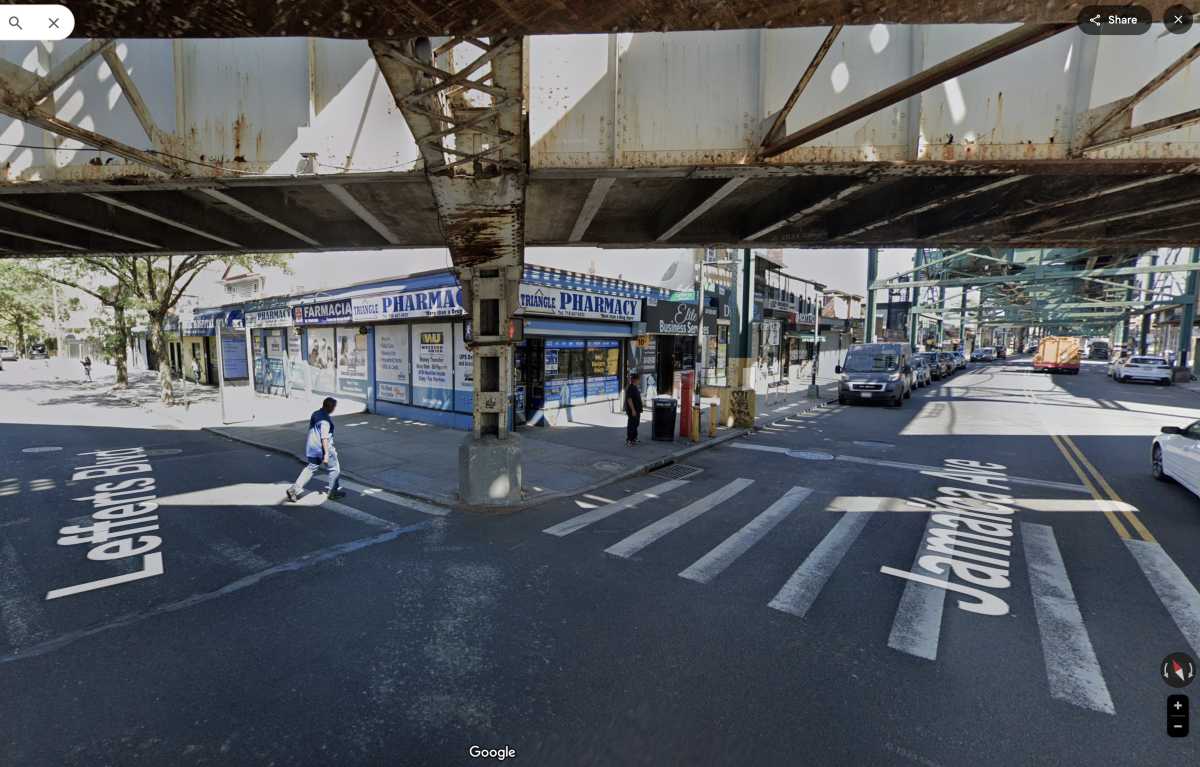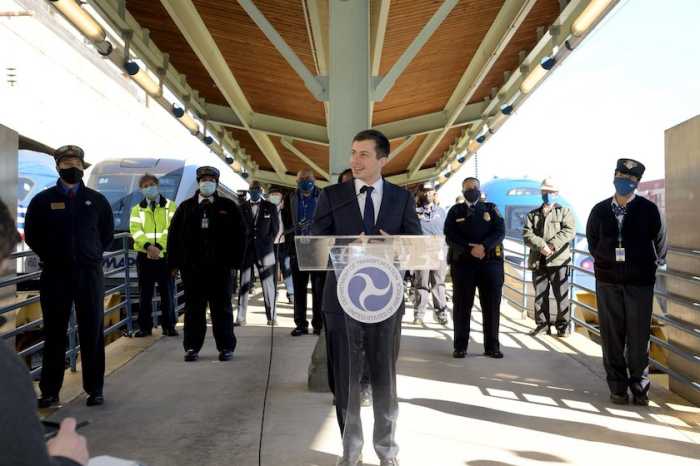A coalition of community groups held a community sleepout and potluck on Vernon Boulevard on Saturday evening as part of efforts to present an alternative to the One LIC Neighborhood Plan.
Dozens of people attended Saturday’s event, hosted by Western Queens Community Land Trust (WQCLT), LIC Coalition and the Hunters Point Community Coalition at the intersection of Vernon Boulevard and 44th Drive.
Several attendees brought food to Saturday’s event, while others brought musical instruments for a jamming session. The coalition also erected signs calling for “public lands in public hands” during Saturday night’s event.
The sleepout and potluck took place outside the Department of Education building at 44-36 Vernon Blvd., a massive 561,000-square-foot space that the coalition is aiming to convert into the Queensboro People’s Space. This would create a permanently affordable hub for street vendors, small businesses, and local artists. The coalition’s plans for the building also include a rooftop farm to grow produce for the community.
LeShawn “Suga Ray” Marston, a WQCLT member who held a hunger strike at the Department of Education (DOE) building last year, said it is crucial that the building remains in public hands.
Marston, who grew up in Queensbridge, said creating a community space at the DOE building could provide an outlet for children and young adults living in Queensbridge today.
“Young people in my neighborhood are dying,” Marston said. “They’re going to prison selling drugs trying to make some money. If we had this space to make them feel loved, make them feel connected and feel like they matter, then that will change their whole life.”
Lisa Goren of the LIC Coalition also argued that the DOE building and other public buildings near the LIC waterfront should remain public property.
“They need to stay with the community. They can’t be given over to private developers to build high rises,” Goren said.
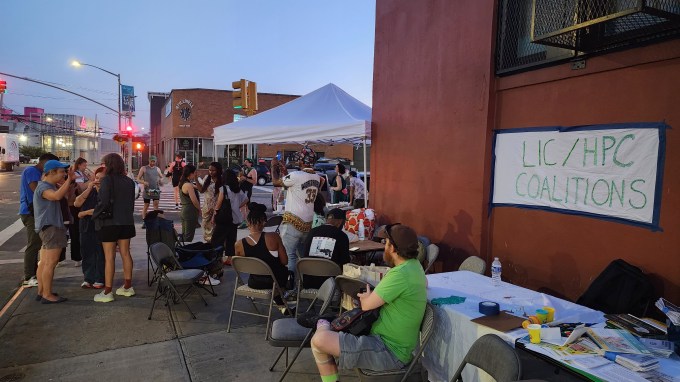
Saturday’s sleepout also called for more affordable housing to be included in the One LIC neighborhood plan.
The plan has put forward a number of proposed zoning changes and aims to introduce 16,000 new housing units, at least 4,000 of which will be affordable, and 16,000 new jobs across different sectors.
The Department of City Planning (DCP) says the plan will also create 7-9 acres of public space on the LIC waterfront, several new schools, safer streets, support for existing businesses and protection for existing tenants.
At a recent community forum, the DCP said the One LIC plan could introduce more than 50 new developments to the neighborhood.
Marston said he is against any new developments in the neighborhood unless they provide 100 % deeply affordable housing.
He added that the One LIC plan bases affordable housing on the Area Median Income (AMI) of New York City, a system he described as flawed due to the high number of billionaires living in the city, which he believes distorts the median income.
“What we’re pushing for is truly deeply affordable housing,” Marston said. “What does that mean? It means that it should be based on the people who live in the neighborhood and what’s affordable to them.”
Goren said the One LIC plan should bring the community back into balance, stating that the social make-up of Long Island City is currently lopsided due to the focus on luxury developments in recent years.
“I don’t have a problem with affluence, but we need to be able to bring the community back into balance, and we need to create spaces for artists and businesses that have been priced out,” Goren said. It’s not just living space. We need art studios that are affordable, and we need commercial space that’s affordable.”
Both Goren and Marston stated their opposition to any new developments beyond the floodplains in LIC and said the LIC waterfront is needed for resiliency purposes.
Goren said the coalition’s proposal for the neighborhood includes detailed resiliency plans and mitigation strategies for the neighborhood, including a buried seawall at the waterfront. She said any new development should be behind the seawall for resiliency purposes.
Marston, on the other hand, said he has already received reports of flooding from residents living in waterfront developments and said developers had ignored concerns from locals who voiced their opposition to new towers on the waterfront.
“We’ve been saying, ‘Don’t build here’, but y’all not listening,” Marston said.
Any new development constructed as part of the One LIC plan must include significant givebacks to the community, Marston added.
“They should help fund businesses. There should maybe be a fund for families who are priced out without a place to live. Those are the type of things that should be guaranteed,” Marston said.
“They (developers) will guarantee fixing the street or the sewer. They’ll guarantee adding new stuff to the park. It’s all cool, but it doesn’t really help the people that live here now that’ll be in priced out.”
Both Marston and Goren also argued that Long Island City will not be able to cope with the huge influx of new buildings proposed in the One LIC plan.
“We’re already struggling with these incredible deficits of open space and school seats,” Goren said. “We’re already struggling with what we have, so of course the community can’t handle some of these buildings that they’re talking about. It’s just not in balance and it’s just going to add to the current problems we’re having.”
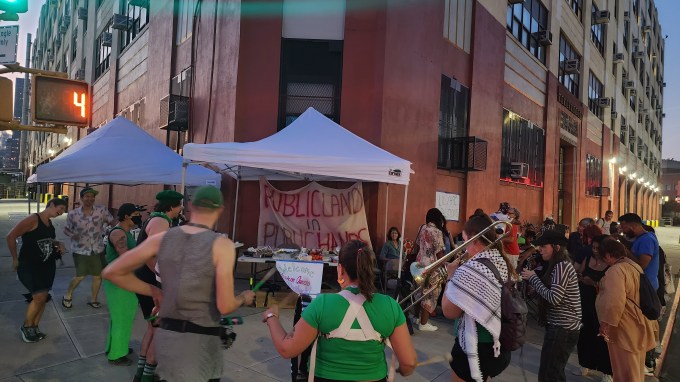
The DCP’s deadline for public comments on the One LIC plan‘s Environmental Impact Study passed on Friday, Sept. 13. The DCP will continue to host public forums and town halls over the next six months before the plan enters the Uniform Land Use Review Procedure (ULURP) stage next March.


